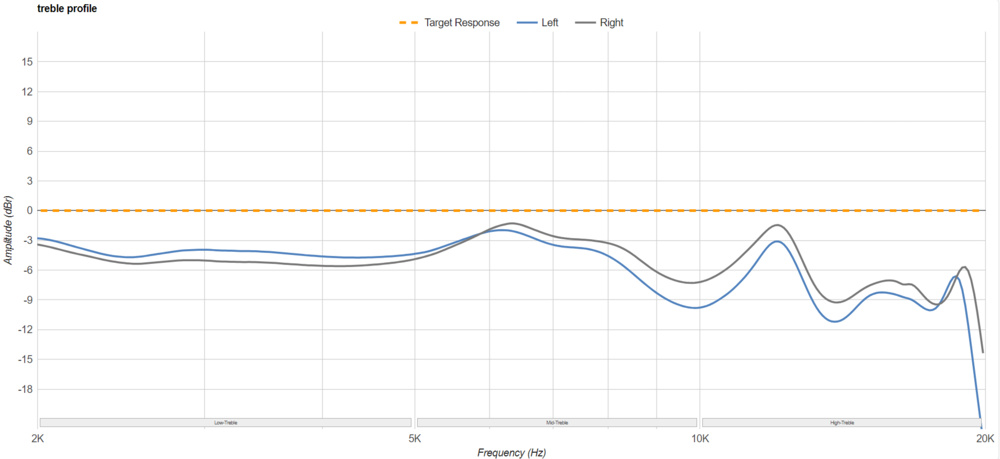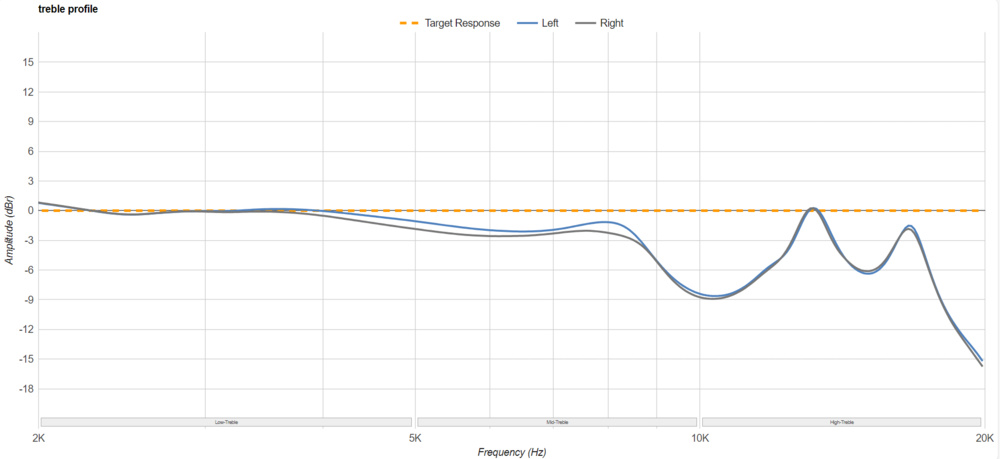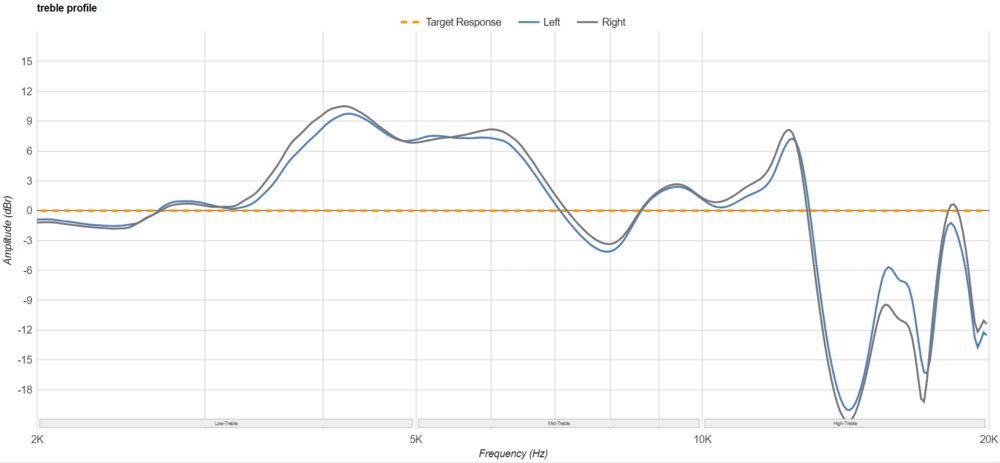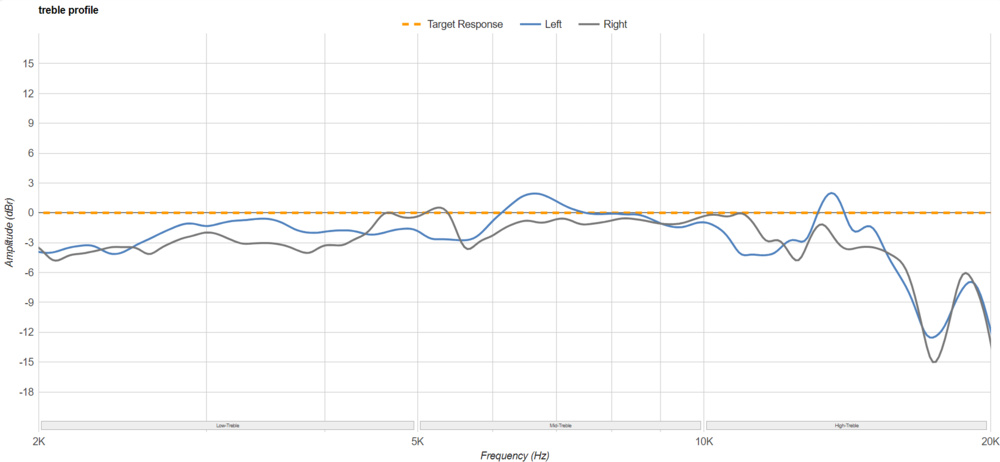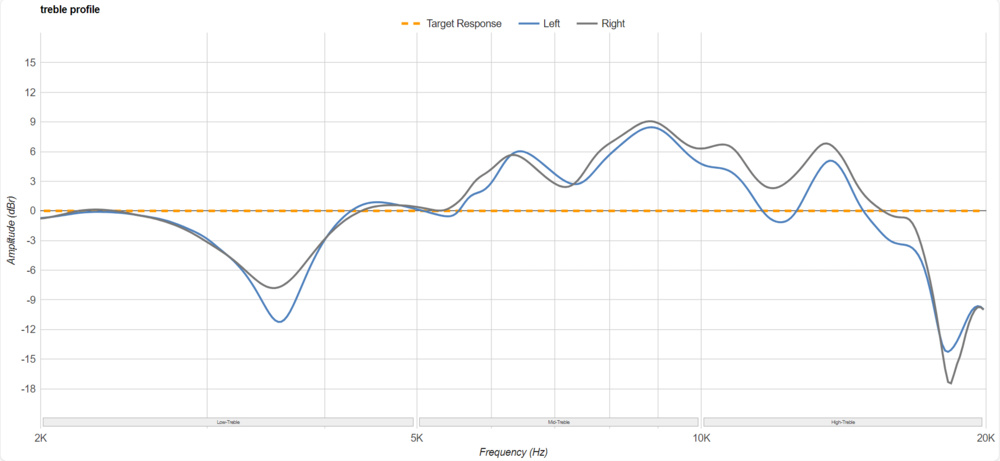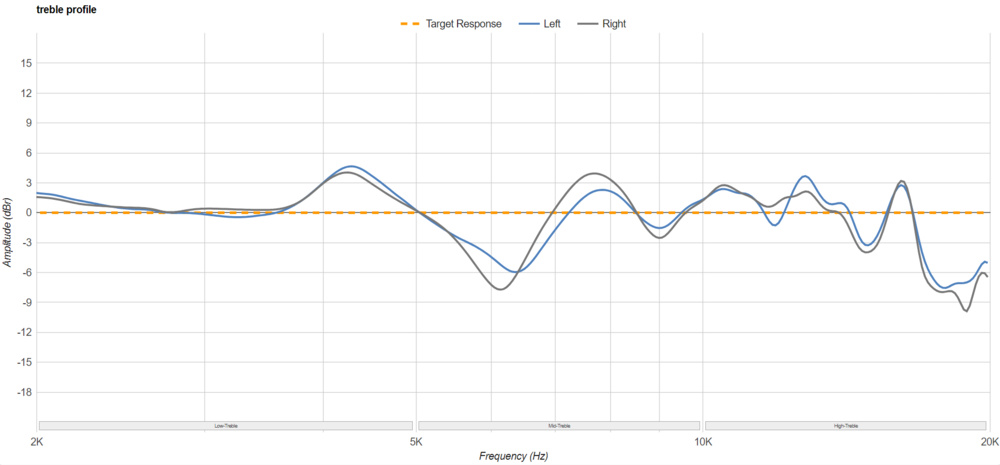Treble describes the high-range spectrum of frequency response, spanning from 2.5 kHz up to 20 kHz. These high tones are the sharp sounds you can hear in music. Hi-hats, cymbals, sibilants (like the S and T sounds you'll hear in speech), and the higher harmonics of other instruments all lie within this spectrum and add brightness to your audio.
We measure the low-treble, mid-treble, and high-treble frequency response for treble performance. Then, we use these values to calculate the deviation of the treble reproduction away from our target curve. We also use descriptive language to help capture over- and underemphasized frequencies, so if you're still getting used to this terminology, you'll want to check out our sound quality glossary.
Test results
When It Matters
The treble range matters for vocals and higher harmonics of instruments like cymbals and hi-hats, which add brilliance to music.
An over-hyped treble profile can make audio tracks sound sharp and even piercing, especially if the bass and mids are lacking compared to the treble. Some people may prefer a brighter sound, though, as it can make genres like podcasts, audiobooks, or calls clearer and easier to understand. If you're mixing and mastering tracks, then extra treble can even help emphasize imperfections in your tracks.
An under-hyped treble profile can cause some tracks to sound dark and dull. Some bass-heavy headphones tend to have further recessed treble ranges. That said, in a warm sound profile (where the high bass has more emphasis than the rest of the bass or treble responses), vocals and instruments lose a bit of their edge, resulting in a pleasant and smooth sound.
Frequencies within the 15 kHz up to 20 kHz range are age-dependent and, therefore, not audible to everyone. Treble sensitivity thresholds also vary from user to user, and high frequencies can cause discomfort to certain listeners than others. Your listening habits are also important, as different treble profiles may be more noticeable with music or podcasts than with movies.
Our Tests
RMS Deviation From Target
RMS Deviation From Target shows the amount of deviation between the measured treble response from our target curve.
Since high frequencies have very short wavelengths, they're highly sensitive to positioning preference and head/ear shape. Therefore, most headphones show inconsistencies in their treble response across multiple re-seats on the same head and between differently sized and shaped heads.
Low-Treble
We calculate the low-treble value by averaging the amplitudes of each frequency within the low-treble region. We then report the final value relative to our target.
In the low-treble region, instruments get clarity, detail, and articulation. You can even find some parts of human speech here (if their pitch is high enough). You may perceive headphones with less treble than our target curve as lacking clarity and detail, especially on vocals and leads. Conversely, headphones with more low treble than our target curve may sound harsh, forward, and even painful at times.
Mid-Treble
The mid-treble value, similar to the low-treble value, is calculated by averaging the amplitudes of each frequency within the treble region. We then report the final value relative to our target.
The mid-treble region is where you'll find presence, brightness, and sibilance. Headphones with less treble than our target curve may sound dark and lispy (lacking S and T). Conversely, headphones with more treble can sound overly bright, piercing, and even painful at times.
High-Treble
The high treble value, just like low treble and treble, is calculated by averaging the amplitudes of each frequency within the high-treble region. We then report the final value relative to our target.
Like low bass, the high treble is mostly felt rather than heard. However, for high treble, this is due to the very high frequencies occupying this range. Humans tend to lose sensitivity to these frequencies with age, so some of the errors and deviations in this region may not be audible to some.
This is the region where airiness and brilliance come from. Therefore, you may perceive headphones with less high treble than our target curve as lifeless and closed-up. Conversely, you may perceive headphones with more high treble as sounding hissy and excessively airy. Measurement results in high treble are highly sensitive to placement and head/ear shape.
The treble range encapsulates the high end of our hearing. Here, you'll find sounds like some parts of human speech (like S and T sounds) and cymbals. However, sounds in this range can be hard to hear when it comes to the upper limits of the spectrum. This issue is further compounded as we lose sensitivity to these frequencies over time. Whether you prefer more or less treble in your audio, you can use an EQ to help you achieve a sound close to your liking.
